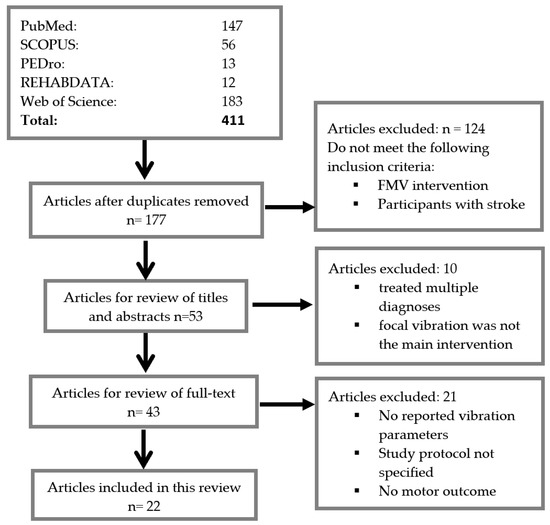Useless, since I see no protocols listed and nowhere to find them.
Focal Muscle Vibration for Stroke Rehabilitation: A Review of Vibration Parameters and Protocols
1
Department of Rehabilitation Sciences,
College of Allied Health, Health Sciences Center, University of
Oklahoma, 1200 N Stonewall Ave, Oklahoma City, OK 73137, USA
2
Peggy and Charles Stephenson School of
Biomedical Engineering, University of Oklahoma, 660 Parrington Oval,
Norman, OK 73019, USA
*
Author to whom correspondence should be addressed.
Appl. Sci. 2020, 10(22), 8270; https://doi.org/10.3390/app10228270 (registering DOI)
Received: 9 October 2020 / Revised: 6 November 2020 / Accepted: 17 November 2020 / Published: 21 November 2020
(This article belongs to the Section Applied Biosciences and Bioengineering)
In this review, we present a narrative synthesis of studies on the use
of focal muscle vibration (FMV) in stroke rehabilitation with a focus on
vibration device, parameters, and protocols. A search was conducted via
PubMed, SCOPUS, PEDro, REHABDATA, and Web of Science using the keywords
“stroke and focal vibration” or “focal muscle vibration”. Inclusion and
exclusion criteria to select the articles were determined. Twenty-two
articles involving FMV and stroke were included in this review. Eight
different vibration devices were used in the 19 articles that reported
the vibration apparatuses. The vibration frequencies ranged from 30 Hz
to 300 Hz with amplitudes ranging from 0.01 mm to 2 mm. The vibration
treatment frequency ranged from a single treatment to 5 days/week. The
session duration ranged from 14 s to 60 min/session with a duration of a
single treatment to eight weeks. Twenty different muscles were targeted
with 37 different outcome measures used to assess the effects of FMV.
The clinical applications of FMV were not confirmed based on available
evidence. More research is needed to improve the FMV technology, guide
the selection of vibration parameters, optimize the vibration dosage,
and develop standardized protocols for FMV therapy in patients with
stroke.
View Full-Text
Keywords:
focal muscle vibration; FMV; stroke; vibration frequency; vibration amplitude; vibration duration; vibration device(s)
▼
Show Figures
This is an open access article distributed under the Creative Commons Attribution License which permits unrestricted use, distribution, and reproduction in any medium, provided the original work is properly cited



No comments:
Post a Comment